Diversity and Inclusion: 7 specific behaviors you should foster
Two words that are very much in vogue nowadays are Diversity and Inclusion, or the lack of it.
First, because I always feel that defining words is important, I want you to realize that, even though many times they are used interchangeably, they are definitely not the same.
Diversity is about the mix. Inclusion is making the mix work.
By now, most organizations have wised up and realized that diversity IS important and that they should strive to have a more diverse workforce and leadership.
No organization wants to be described as one that discriminates. And yet, we see all around more accusations and examples or wrongdoing that we can be comfortable with.
Organizations and persons that don’t embrace diversity tend to be seen as people that discriminate. The term "discrimination" generally evolved in American English usage as an understanding of prejudicial treatment of an individual based solely on their race. It was later generalized as membership in a certain socially undesirable group or social category. The word "discrimination" derives from Latin, where the verb discrimire means "to separate, to distinguish, to make a distinction”.
Unfortunately, discrimination is alive and rampant. People may discriminate on the basis of age, caste, criminal record, height, weight, physical appearance, disability, family status, gender identity, gender expression, generation, genetic characteristics, marital status, nationality, Profession, color, race and ethnicity, religion, sex and sex characteristics, sexual orientation, political ideology, social class, personality, as well as other categories.
Uff! Just writing about all possible bases for discrimination makes me tired. A simpler way to think about it is that we tend to not see, and not take into consideration people that are different from us.
But here is the thing, even if you, your family, or your organization think you don’t discriminate, you could have a blind spot and not even notice that you may be discriminating.
This is why I like the focus should be on inclusion, since inclusion is what really changes everything.
Inclusion focuses on making the growing diversity of the workplace function better. It’s about empowerment, engagement, and respect. It is valuing the view points, beliefs, and practices of others.
In families, inclusion focuses on recognizing the differences of each member of the family, valuing those differences, and engaging them in the family dialogue.
An organization that develops a more inclusive mindset and culture will hear and value everyone’s voice. Team members, new or old, can speak frankly with others no matter what their rank or tenure. Meetings include representation from everybody affected by the decisions. Consensus is the preferred way to make decisions and set goals, with ample participation from everyone.
I want to focus today on 7 Specific behaviors that foster inclusion.
Initiate contact. Be authentic in greeting people. Hello and a smile tend to open doors to communication. If there is a misunderstanding, be the first to address it to resolve the disagreement. Take the risk to take the initiative.
Build trust. Find ways to create a sense of safety where nobody fears to share their thoughts. Do what you say you will do and honor confidentiality. Inclusion also builds trust. By including people across many differences—functions, departments, roles, as well as background, age, ethnicity, gender, race, and nationality—you will build trust. You will also gain a breadth of perspective you can’t get any other way.
Connect. Recognize other’s ideas, thoughts and feelings, and link them to the ongoing conversation. Reach out and make sure the human connection is developed and sustained. Speak up if people are being excluded.
Listen to understand. Organizations are made of conversations. The organizational “mind” is formed as we listen and talk to one another as allies, not as enemies. Ask others to share their thoughts and experiences and accept their frame of reference as true for them. Listen to those that enthusiastically embrace change, since they bring energy and creativity. Listen also to the dissenters, since their voice brings attention to potential difficulties.
Share. Your own thoughts, feelings and vision. Work for the common good. Think win-win. Don’t be afraid of discomfort. Be willing to challenge self and others. Include a wide sample across the company to develop a vision of the way things could be.
Be flexible. Have an open mind and an open heart that invites and embraces differences. Remember that you aren’t always right. Leave your ego behind. Be willing to negotiate, compromise, and find a middle ground all can live with.
Think systemically. Ask who else needs to be in the room to understand the whole situation. Remember that changes in one part of the system affects all the system.
When leaders shift their mindsets from exclusion to including the right people at the right time in the right decisions, change and innovation become easier. Welcoming input from more people at more levels, inviting differences in perspective, enables people to engage more fully.
Inclusion enables a new level of collaboration for change. Partnerships with others within the organization helps things operate more smoothly. People become more closely aligned with one another’s common goals and ways to achieve shared success.
You then have a diverse organization that includes all the different minds into a collaborative, cohesive entity that will be at the forefront of the type of organization that is needed today.

